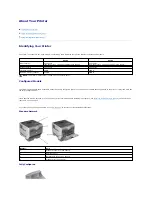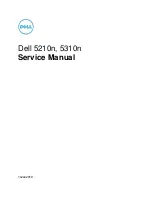
1
1-4
Desktop Color Primer
Subtractive (CMY and CMYK) color
The subtractive color model is used in color printing, and in color photographic prints
and transparencies. While the additive color model simulates the visible spectrum of
color by adding light of three primary hues, the subtractive color model uses a “white”
or neutral light source containing light of many wavelengths. Inks, toners, or other
colorants
are used to selectively absorb (subtract) certain wavelengths of light that
otherwise would be reflected or transmitted by the media in question.
The
subtractive primaries
are cyan, magenta, and yellow; they absorb red, green, and
blue light, respectively (plate 7). Combining any two subtractive primaries creates a
new color that is relatively pure or saturated. For example, you can make red by
combining magenta and yellow, which absorb green and blue light, respectively. White
occurs when no colorant is applied. Combining all three subtractive primaries in
theory yields black, but due to deficiencies of cyan, magenta, and yellow colorants,
combining these three primaries actually yields a muddy brown. Black colorant is
added to compensate for the deficiencies of cyan, magenta, and yellow colorants, and
consequently color printing uses four
process colors
:
C
yan,
M
agenta,
Y
ellow, and
blac
K
(CMYK). The use of black ink helps in producing rich solid blacks and also
allows for improved rendition of black text.
The CMYK colorants used in offset printing and by your DocuColor 40 CP print
device are to some degree transparent. When one layer of colorant is applied on top of
another, you see the effect of both. To create a range of intermediary colors, a method
is required for varying the amount of each colorant that is applied. A technique called
halftoning
is used in offset printing, while color print devices typically use a
proprietary system for applying ink or toner colors that is similar to halftoning.
Printing techniques
Until recently, most color printing was done on printing presses using one of several
printing techniques—
offset lithography
,
flexography
, and
gravure
, to name a few.
All traditional printing techniques require lengthy preparation before a print run can
take place. Short-run color printing, including DocuColor 40 CP printing, eliminates
most of this preparation. By streamlining the process of color printing, the
DocuColor 40 CP makes short print runs economically feasible.








































